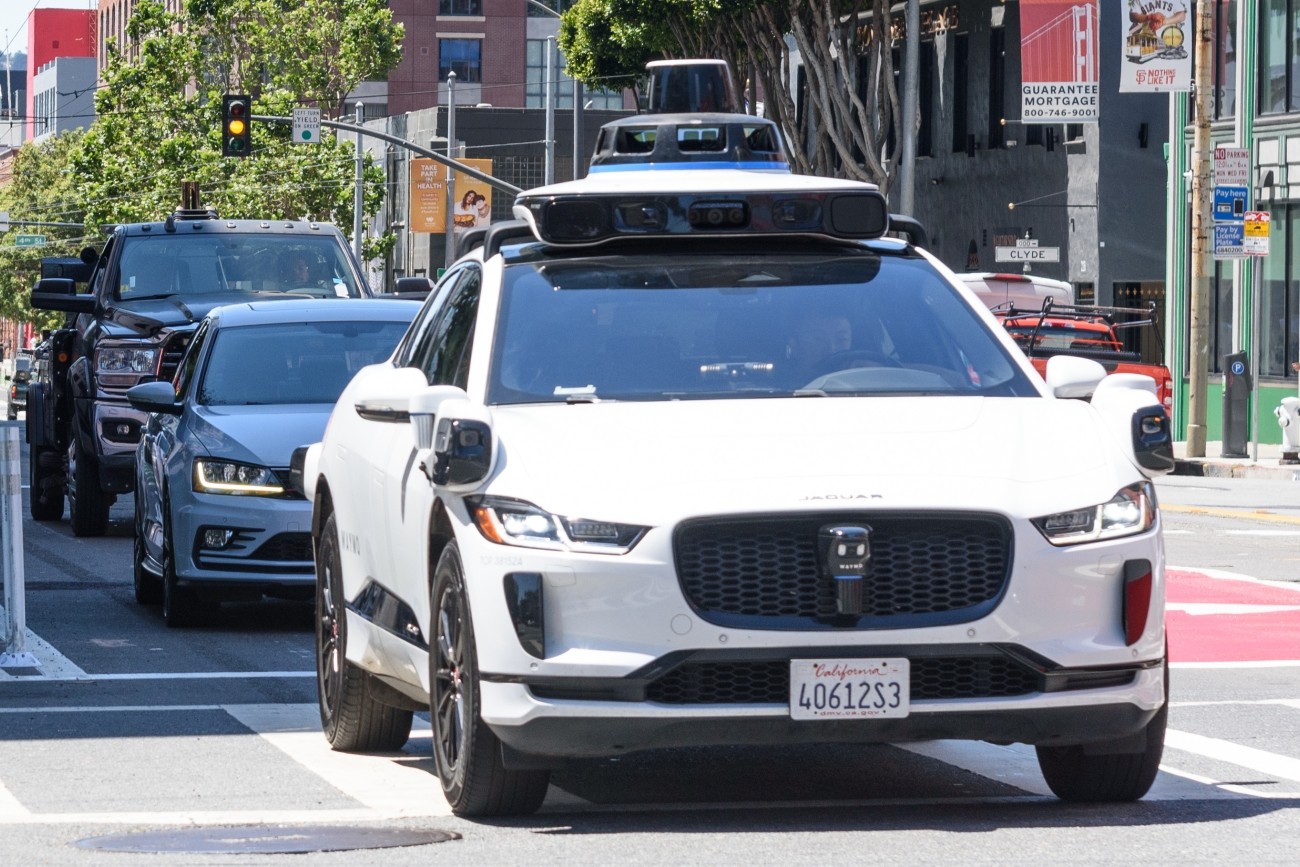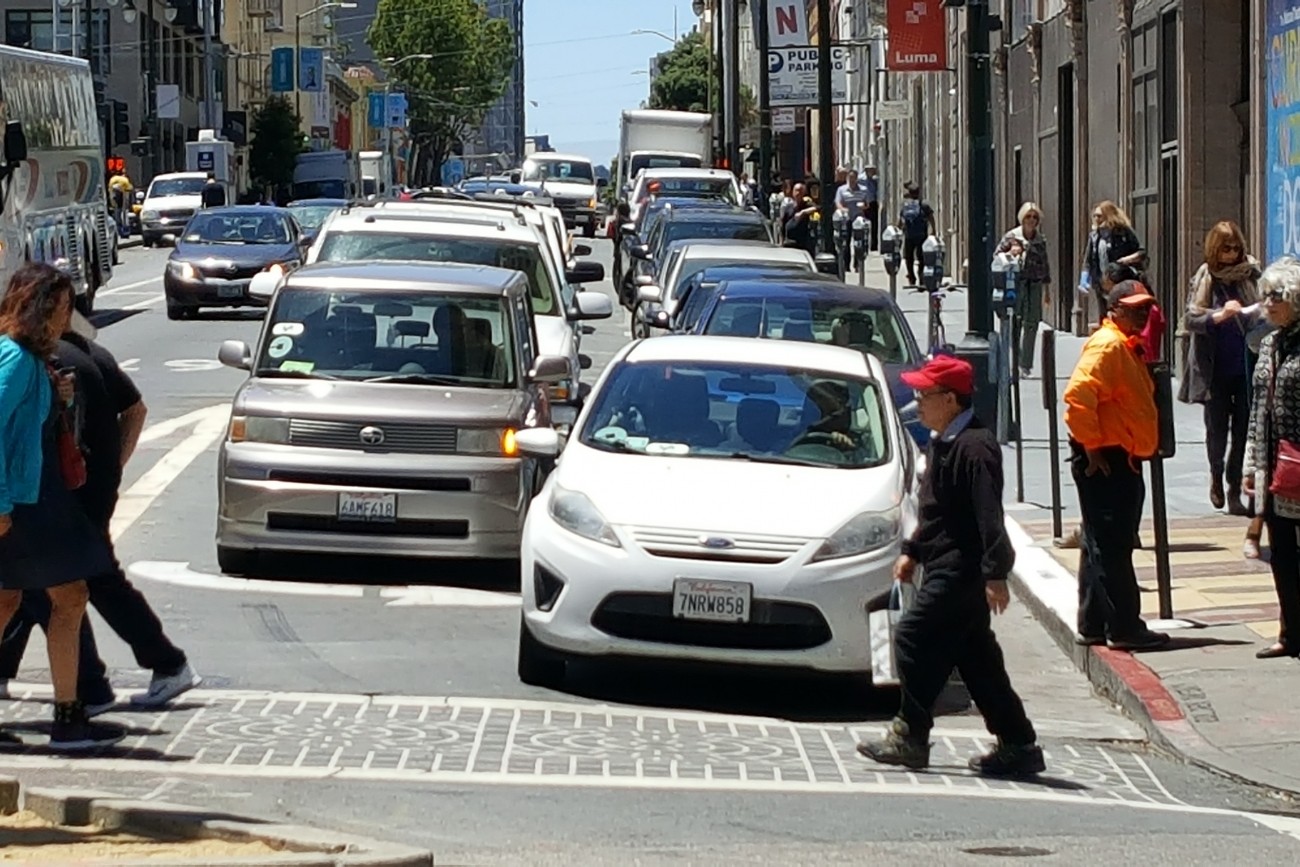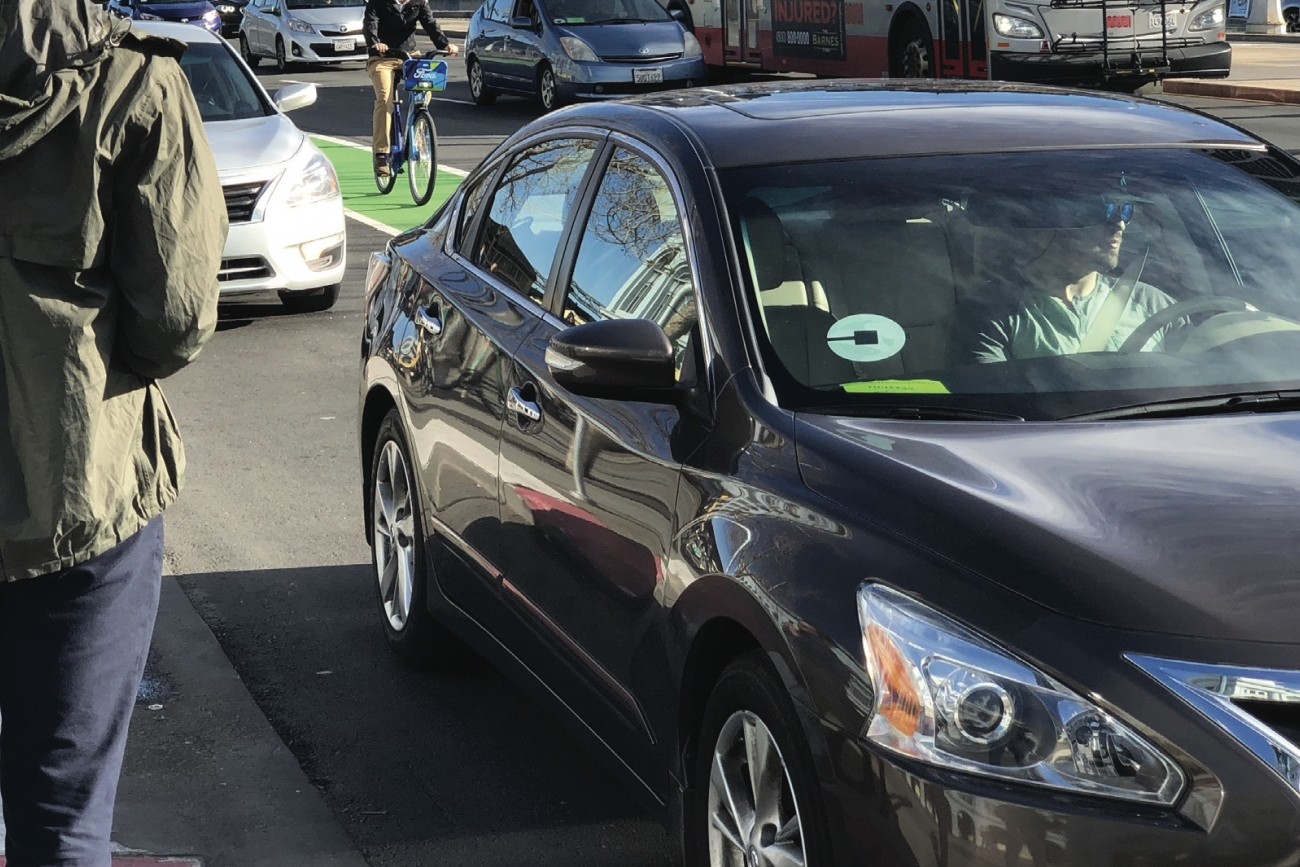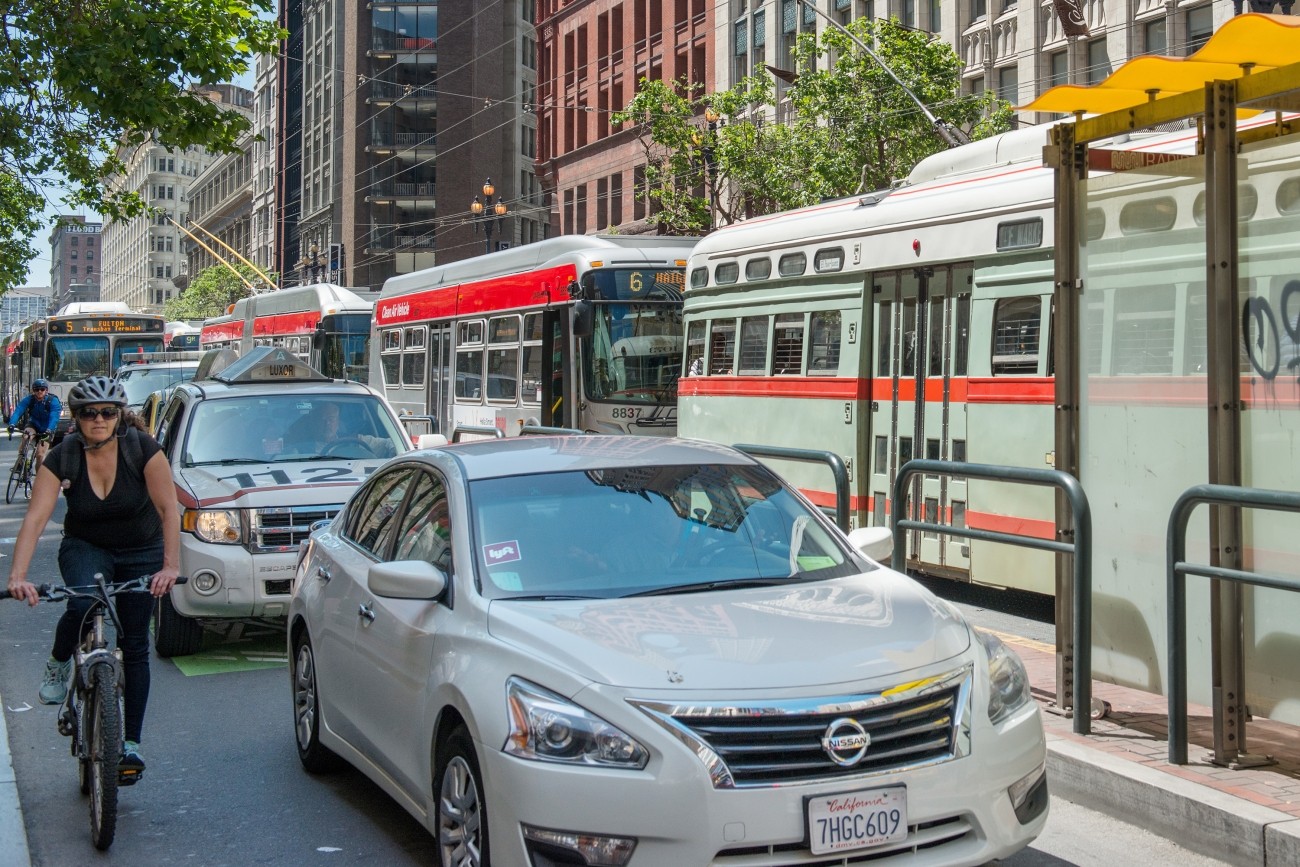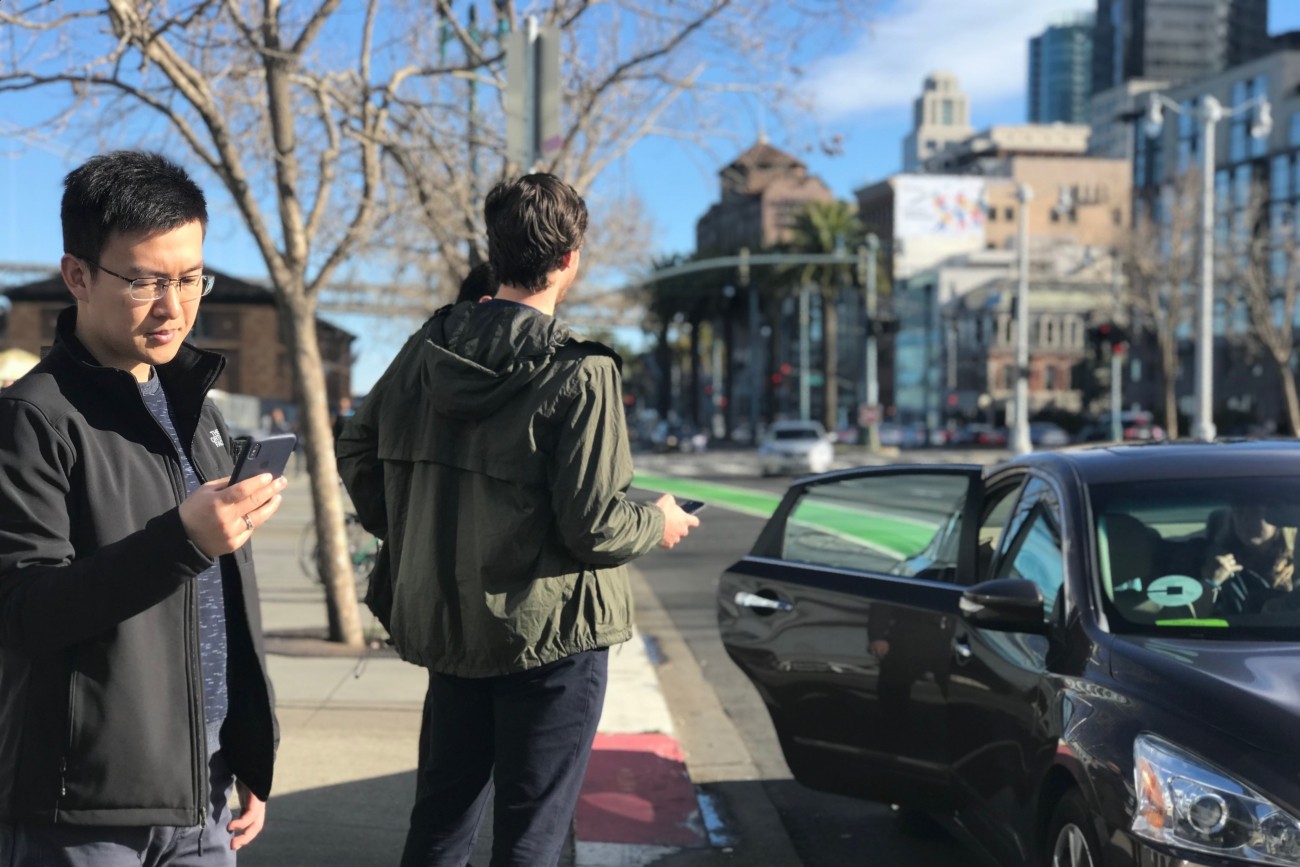
Introduction
New technologies are fundamentally changing the way residents and visitors get around San Francisco. In just a few years, innovations in transportation have brought us ride-hail services, autonomous vehicles, bike share, carpooling services, scooters, and more.
The Transportation Authority is working with the SFMTA and partners from the public and private sector to better understand how these services and technologies are influencing San Francisco’s transportation network. We’re using that understanding to guide these innovations, and set precedents for future ones, to meet San Francisco’s goals.
Resources
10 Guiding Principles
The Transportation Authority and the SFMTA in 2019 adopted 10 Guiding Principles to serve as a framework for evaluating these services and technologies, identifying ways to meet City goals, and shaping future areas of studies, policies, and programs. These guiding principles were developed through a stakeholder engagement process in collaboration with the SFMTA.
Collaboration
Emerging Mobility Services and Technology providers and the City must engage and collaborate with each other and the community to improve the city and its transportation system.
Safety
Emerging Mobility Services and Technologies must be consistent with the City and County of San Francisco’s goal for achieving Vision Zero, reducing conflicts, and ensuring public safety and security.
Transit
Emerging Mobility Services and Technologies must support, rather than compete with public transit services, must account for the operational needs of public transit and encourage use of high-occupancy modes.
Congestion
Emerging Mobility Services and Technologies must consider the effects on traffic congestion, including the resulting impacts on road safety, modal choices, emergency vehicle response time, transit performance and reliability.
Sustainability
Emerging Mobility Services and Technologies must support sustainability, including helping to meet the city’s greenhouse gas emissions reduction goals, promote use of all non-auto modes, and support efforts to increase the resiliency of the transportation system.
Equitable Access
Emerging Mobility Services and Technologies must promote equitable access to services. All people, regardless of age, race, color, gender, sexual orientation and identity, national origin, religion, or any other protected category, should benefit from Emerging Mobility Services and Technologies, and groups who have historically lacked access to mobility benefits must be prioritized and should benefit most.
Accountability
Emerging Mobility Services and Technologies providers must share relevant data so that the City and the public can effectively evaluate the services’ benefits to and impacts on the transportation system and determine whether the services reflect the goals of San Francisco.
Labor
Emerging Mobility Services and Technologies must ensure fairness in pay and labor policies and practices. Emerging Mobility Services and Technologies should support San Francisco’s local hire principles, promote equitable job training opportunities, and maximize procurement of goods and services from disadvantaged business enterprises.
Disabled Access
Emerging Mobility Services and Technologies must be inclusive of persons with disabilities. Those who require accessible vehicles, physical access points, services, and technologies are entitled to receive the same or comparable level of access as persons without disabilities.
Financial Impact
Emerging Mobility Services and Technologies must promote a positive financial impact on the City’s infrastructure investments and delivery of publicly-provided transportation services.
Note: Not all Guiding Principles will be relevant to every service or technology type. In some cases, a service or technology type may not meet all of the principles consistently. The Transportation Authority and SFMTA will consider whether a service or technology meets each Guiding Principle. If a service provider or technology does not meet these Guiding Principles, the Transportation Authority and SFMTA will work with the service provider to meet the principles or may choose to limit their access to City resources.
Statements
Inventory of Service and Technology Types
The Transportation Authority defines an Emerging Mobility Service or Technology as one that automates three or more of the following services: driving, routing, reservations/orders, vehicle tracking, billing, customer feedback, matching/sharing, crowd-sourced routing, and (un)locking
These include:
Autonomous Vehicle Services | Tesla, Cruise, EasyMile, Waymo, Zoox According to the UK Department of Transport, “a fully autonomous vehicle (AV) is capable of completing journeys safely and efficiently, without a driver, in all normally encountered traffic, road and weather conditions. In other words, AVs need to operate on par or better than human-driven vehicles in all conditions. AVs have the potential to drastically change our infrastructure, traffic and parking needs, insurance policies, and much more. AVs are continually growing in a number of markets, including car share and ridesourcing fleets (TNCs), shuttle services and personal vehicles. |
Ridesharing/Carpool | Scoop, Waze Carpool Ridesharing is the third-party service of matching riders and drivers with similar shared destinations, enabling them to split the cost of the ride. Unlike ridesourcing and ridesplitting, the driver is not fare-motivated. There are two types of emerging mobility ridesharing services: dynamic matching, which is the matching of riders to drivers on-demand, and the batching of matches, where travelers enter their desired pickup and drop-off schedule and all of the inputs are matched at a certain hour every day, alerting the users of their upcoming schedule. |
Microtransit / Shuttle services | Microtransit is a privately operated shuttle service, usually enabled by technology to operate along a dynamically generated route. Microtransit typically operates in areas where public transit is reaching capacity, not always available, or where there is significant demand for an alternative to public transit. As such, microtransit services usually focus on commuters’ experience and offer bus-stop similar service to individuals willing to pay the additional price above public transit. Microtransit companies can vary by fleet (buses or vans), route structure (fixed or dynamic), and, more recently, fleet ownership. |
Bike share / E-Bike | Ford GoBike, LimeBike, JUMP, Lyft Bike sharing is a system that makes bicycles available to users to access as needed for point-to-point or round-trip trips, traditionally to station kiosks. They are generally unattended and established in dense urban areas. Advances in bike share locking technology have allowed for free-floating or "dockless" bikes within a geographic region. Bike sharing can be privately owned, public, or, most commonly, offered through a public-private partnership. |
Courier Network Services | Doordash, Postmates, Grubhub, Caviar Courier Network Services are companies that develop a platform to connect orders to delivery drivers utilizing their app network. These on-demand delivery platforms connect thousands of part-time local delivery drivers with customers requesting products to be delivered immediately. |
Electric Moped Share | Scoot Scooter sharing is the shared-use of a fleet of mopeds, typically managed by a third-party. The mopeds are often electric. Systems usually allow for both point-to-point and round trips. Members can rent the mopeds by the minute. |
Ridesourcing/ | Uber, Lyft Ridesourcing services match riders with drivers, on-demand. Ridesourcing is often referred to as “ridesharing”; however, we have chosen the term “ridesourcing” to distinguish the fact that these drivers do not share a destination with their fares. Ridesourcing companies are distinguished from taxi services by the ability to street hail (ridesourcing companies can only pick up pre-arranged rides). The companies are known in California as Transportation Network Companies (TNCs) and are regulated by the California Public Utilities Commission. |
Car share | GIG Carshare, Maven, Zipcar, car2go Point-to-point/One-way: Users can pick-up and drop off cars anywhere within a defined geographic region. The cars are stored on the street. This is the fastest growing model of car sharing. Point-to-point car sharing is typically managed by a third party who owns the fleet. Unlike other models of car sharing, point-to-point fares can be charged by the minute. At present, there are no point-to-point car sharing models in San Francisco. Round-trip: Users reserve a vehicle from the same pick-up spot they return the vehicle to. Vehicles are stored in parking lots and garages, though some cities have explored designated on-streetspaces, where car sharing vehicles are not subject to typical street parking violations, such as street cleaning. Round-trip car sharing is typically managed by a third party who owns the fleet and the fares are usually by the half-hour. |
Electric Standing Scooters / E-scooters | JUMP, Lime, Skip, Lyft, Scoot, Spin, Bird Scooter sharing is the shared-use of a fleet of scooters, typically managed by a third-party. The scooters are often electric. Systems allow for point-to-point trips. Members can rent the scooters by the minute. |











